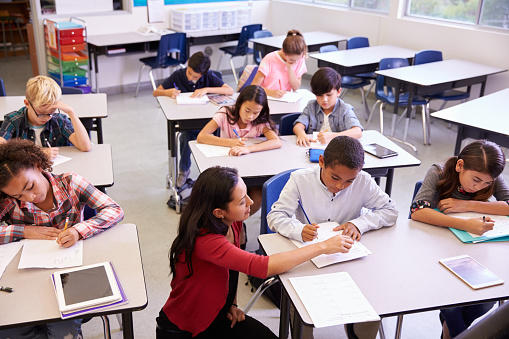How personalization can change teaching and learning
Chicago’s Lovett Elementary School teems with energy. On any day, you might catch a presentation called “Real Men Read” or celebrate with the Principal Scholars, students who have earned all A’s in key subjects. Too bad you’ve already missed the Library Makeover Event, at which Lovett’s principal, LeViis Haney, actually built some of the shelves.
“They’re a great school,” says Phyllis Lockett, executive director of LEAP Innovations, one of McGowan’s recent education grantees. “It’s a traditional school with a leader who is committed to innovating and inspiring.” But Lovett is also steeped in difficult demographics: About 58 percent of adults in the area haven’t graduated high school. Incomes are low. During the year, between 30 and 50 percent of Lovett’s families and neighbors run out of food at least once. Add the wide range of student skills at Lovett—“The kids are all over the map,” says Principal Haney—and you’ve got a recipe for teacher burnout and student failure.
Enter LEAP Innovations, with a game-changing idea: personalization, which boosts learning with individual pacing, support, and remediation. Lovett is one of 16 schools participating in LEAP’s 10-month Breakthrough Schools program, which offers expert-led workshops aimed at personalization. Key to LEAP’s success: using technology to schedule, assess, track, pace, teach, reassess, and more.
Working with LEAP, Lovett teachers have learned to collect and use data to customize each child’s path. With easy-to-understand data reports and a technology-based reading program, the teachers are newly inspired. “We’ve learned that technology is an accelerant—if you use it right,” says Haney.
Over the years, LEAP Innovations has learned a few things too. “We learned that just identifying the right technology wasn’t enough. Unless the pedagogical approach changes, the data doesn’t help,” remembers Lockett. Accordingly, Breakthrough Schools now has a longer piloting process, which introduces personalization first and then potential technologies.

